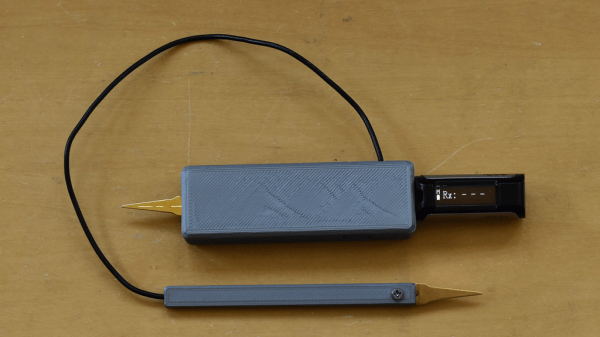When you’re lucky enough to have a dog in your life, you tend to overlook some of the more one-sided aspects of the relationship. While you are severely restrained with regard to where you eliminate your waste, your furry friend is free to roam the yard and dispense his or her nuggets pretty much at will, and fully expect you to follow along on cleanup duty. See what we did there?
And so dog people sometimes rebel at this lopsided power structure, by leaving the cleanup till later — often much, much later, when locating the offending piles can be a bit difficult. So naturally, we now have this poop-shooting laser turret to helpfully guide you through your backyard cleanup sessions. It comes to us from [Caleb Olson], who leveraged his recent poop-posture monitor as the source of data for where exactly in the yard each deposit is located. To point them out, he attached a laser pointer to a cheap robot arm, and used OpenCV to help line up the bright green spot on each poop.
But wait, there’s more. [Caleb]’s code also optimizes his poop patrol route, minimizing the amount of pesky walking he has to do to visit each pile. And, the same pose estimation algorithm that watches the adorable [Twinkie] make her deposits keeps track of which ones [Caleb] stoops by, removing each from the worklist in turn. So now instead of having a dog control his life, he’s got a dog and a computer running the show. Perfect.
We joke, because poop, but really, this is a pretty neat exercise in machine learning. It does seem like the robot arm was bit overkill, though — we’d have thought a simple two-servo turret would have been pretty easy to whip up.
Continue reading “Point Out Pup’s Packages With This Poop-Shooting Laser”




















